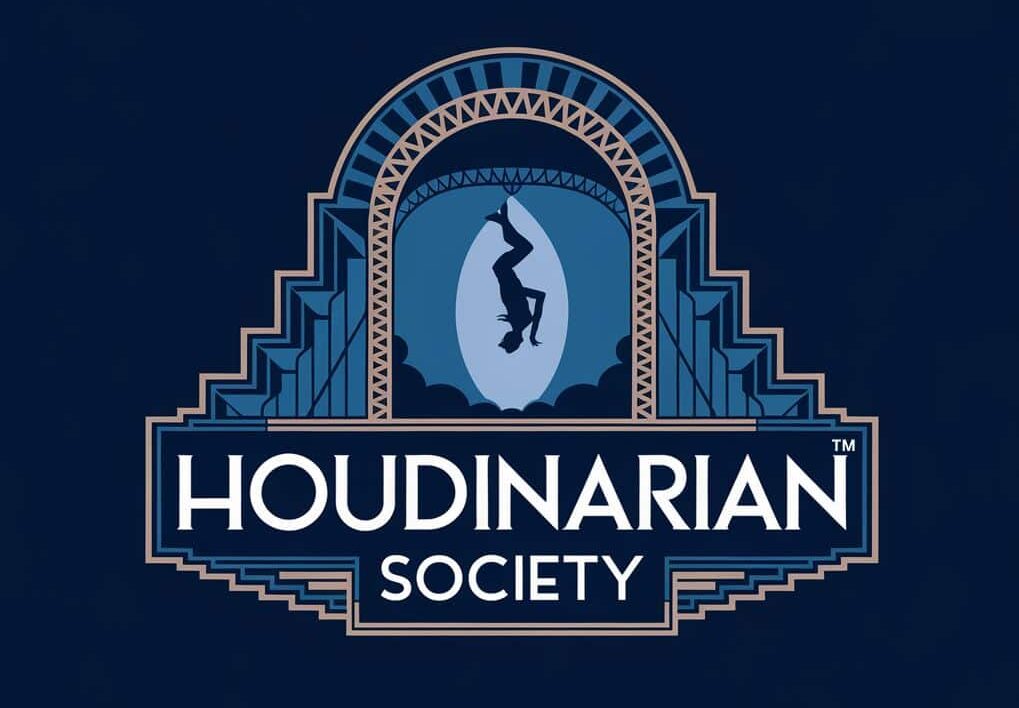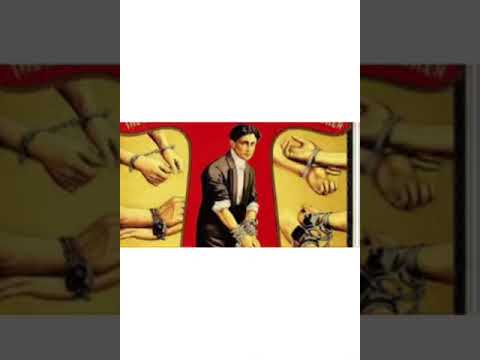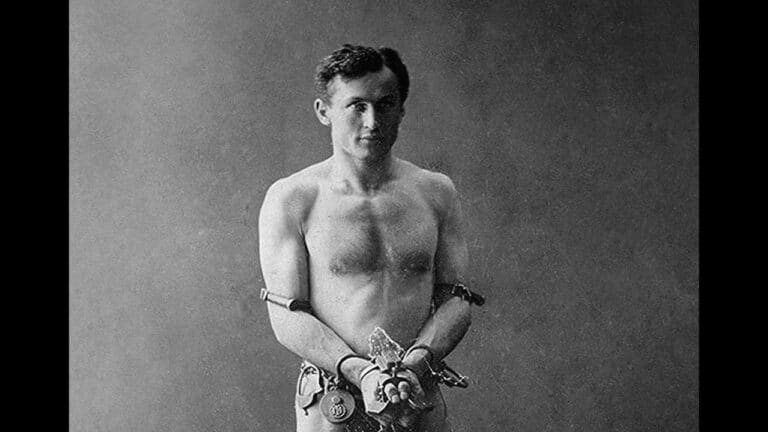Exploring Mentalism: The Psychology Behind Mind Reading Tricks
Mentalism combines magic, psychology, and showmanship to create the illusion of mind reading. Mentalists use techniques like psychology, neuro-linguistic programming, and sleight of hand to make it seem like they can read thoughts. But it’s all based on clever tricks and careful observation.
When you watch a mentalist perform, you might feel they have supernatural abilities. The truth is much more fascinating. These performers spend years mastering subtle cues in body language, speech patterns, and human behavior to predict and influence your thoughts.
You can learn the basics of mentalism through practice and dedication. Professional mentalists master specific techniques and psychological principles to create convincing performances. The real magic lies in their ability to blend these skills seamlessly, making the impossible seem real.
The Foundations Of Mentalism

Mental influence and mind reading tricks rely on a blend of psychology, showmanship, and carefully honed techniques that have evolved over centuries. These methods let you appear to possess extraordinary mental abilities while using natural human behaviors and responses.
Historical Context And Evolution
The roots of mentalism trace back to ancient Egyptian temples, where priests used early forms of suggestion and misdirection. During the mid-1800s, mentalism gained prominence through supernatural perception demonstrations in Victorian parlors.
The rise of spiritualism in the late 19th century pushed mentalism into mainstream entertainment. Performers developed new techniques to replicate psychic phenomena under controlled conditions.
By the early 1900s, mentalists shifted away from supernatural claims toward psychological explanations. This change brought credibility and scientific interest to the art form.
Key Figures In Mentalism History
Joseph Dunninger pioneered modern mentalism in the 1920s through radio performances. His work proved that mental effects could succeed without visual elements.
Theo Annemann created revolutionary techniques still used today. His magazine The Jinx documented many foundational methods between 1934-1941.
Derren Brown revolutionized the field by exploring psychological principles and openly rejecting supernatural explanations. His approach combines behavioral psychology with traditional techniques.
The Role Of Psychology In Mentalism
Mentalists use observation and intuition to read subtle physical cues in body language and speech patterns. You can learn to spot these “tells” through practice and study.
Cold reading lets you make accurate statements about strangers by analyzing common human traits and responses. This technique works because people tend to accept general statements as specifically meaningful.
Psychological forces guide audiences toward predictable choices without their awareness. Understanding these natural mental patterns helps you create seemingly impossible effects.
Psychological Principles In Mentalism

Mentalism techniques rely heavily on proven psychological principles that shape human behavior and perception. These methods tap into the natural ways your brain processes information and makes decisions.
Cognitive Biases And Their Exploitation
Your brain uses mental shortcuts called cognitive biases to process information quickly. Professional mentalists use these biases to create mind-reading illusions.
The confirmation bias makes you notice details that match your expectations while ignoring contradicting information. Mentalists use this by making general statements that you’ll naturally connect to your personal experiences.
The anchoring bias affects how you make decisions based on the first piece of information you receive. A mentalist might suggest a number or idea early in their performance, knowing it will influence your later choices.
The Power Of Suggestion And Influence
Your mind is more open to suggestions than you might think. When a mentalist speaks with authority and confidence, they create a framework where you become more accepting of their suggestions.
Subtle verbal cues and leading questions guide your thoughts in specific directions. For example, asking “What color are you thinking of?” already assumes you’re thinking of a color, making you more likely to do so.
Social pressure and group dynamics also play a key role. If others in an audience react a certain way, you’re more likely to follow suit.
Behavioral Analysis And Non-Verbal Cues
Your body language reveals more than you realize. A skilled mentalist reads micro-expressions – tiny facial movements that show true emotions before you can hide them.
Physical tells like pupil dilation, breathing rate changes, and slight muscle tensions provide clues about your thoughts. These signals help mentalists appear to read your mind.
Hand movements and posture shifts often occur unconsciously when you think about specific topics. By watching these subtle changes, mentalists can narrow down your possible thoughts or choices.
Eye movements can indicate whether you’re remembering something or creating new thoughts. Looking up and to the right often means you’re creating new images, while looking up and left suggests memory recall.
Techniques Used In Mentalism

Mentalists use psychological techniques combined with magic tricks and misdirection to create compelling illusions. These methods rely on careful observation, strategic planning, and deep knowledge of human behavior.
Cold Reading Explained
Cold reading is a skill where you make educated guesses about someone based on their appearance, body language, and reactions. You look for subtle clues like wedding rings, clothing styles, and posture.
You can spot age groups through common generational traits. For example, people aged 30-40 often worry about career changes and relationships.
The key is to start with general statements and get more specific based on reactions. When someone nods or shows interest, you follow that path. If they seem unsure, you shift direction.
Professional mentalists combine psychology and observation to make their readings seem impossibly accurate. They pay attention to micro-expressions and involuntary responses.
Hot Reading And Its Applications
Hot reading involves gathering information about your subject before the performance. You might check social media profiles or talk to their friends beforehand.
Some mentalists use carefully planned techniques like hidden earpieces or pre-show conversations to learn details about audience members.
You can use hot reading to create stunning effects. Revealing someone’s PIN number or birth date becomes possible when you’ve done your research.
The Art Of Misdirection
Misdirection draws attention away from your methods. You use your voice, movements, and gestures to guide focus where you want it.
Successful mentalism relies on controlling attention through timing and presentation. When you emphasize certain moments, people miss subtle actions.
Your body language plays a crucial role. Hand gestures can direct eyes away from secret moves. Even your facial expressions can guide attention.
Simple techniques like asking questions or telling stories help create natural misdirection. These moments give you time to prepare your next effect.
Houdini And His Contributions To Mentalism
Harry Houdini revolutionized mentalism by combining psychological manipulation with theatrical showmanship. His mastery of misdirection and keen understanding of human behavior laid the groundwork for modern psychological illusions.
Houdini’s Approach To Mind Reading
Harry Houdini’s mentalism techniques relied heavily on reading subtle behavioral cues and body language. You can see his influence in the way modern performers use similar methods today.
He developed a systematic approach to cold reading, where he would gather information through careful observation of audience reactions. This technique allowed him to appear to know impossible details about spectators.
His most effective tool was suggestion – planting ideas in viewers’ minds through careful word choice and timing. This psychological principle remains fundamental to mentalism performances.
Famous Performances And Their Psychological Underpinnings
Houdini’s spirit medium exposés demonstrated the power of psychological manipulation in mentalism. He would recreate supposedly supernatural phenomena using purely psychological methods.
His famous Question & Answer act involved:
- Reading subtle audience reactions
- Using planted assistants strategically
- Employing clever linguistic techniques
- Capitalizing on statistical probability
During these performances, he expertly balanced skepticism with entertainment, teaching audiences to think critically while keeping them amazed.
Houdini’s Legacy In Modern Mentalism
Modern mentalists continue to build on Houdini’s foundation of combining psychology with theatrical elements. His techniques for misdirection and suggestion remain essential tools.
You can spot his influence in contemporary performances that blend skepticism with entertainment. Many mentalists now openly acknowledge their use of psychology rather than supernatural powers.
His emphasis on exposing fraudulent psychics while preserving the art of entertainment mentalism created an ethical framework still followed today. This approach helps maintain audience trust while delivering compelling performances.
Modern Mentalists And Their Methods
Professional mentalists blend psychology, sleight of hand, and showmanship techniques to create mind-reading illusions. They master both classic methods and cutting-edge approaches to amaze modern audiences.
Notable Contemporary Mentalists
Derren Brown stands out as a leading figure in contemporary mentalism. His performances blend psychological manipulation and misdirection to create stunning effects.
Uri Geller gained fame by bending spoons and reading minds on television. Though controversial, his impact on public interest in mentalism remains significant.
Max Maven pioneered psychological forcing techniques that many performers use today. His contributions helped shape how modern mentalists approach their craft.
Innovations In Mentalism Techniques
Modern mentalists use neuro-linguistic programming and behavioral psychology to enhance their performances. These methods help create more convincing demonstrations.
Key Modern Techniques:
- Digital technology integration
- Social media cold reading
- Psychological forcing
- Dual reality methods
Multiple output strategies allow performers to adapt their routines in real-time based on audience responses.
Case Studies Of Modern Performances
Banachek’s famous Russian Psychic Challenge demonstrated how mentalism can fool even trained scientists. His performance highlighted the power of psychological manipulation.
Derren Brown’s “Russian Roulette” live television event showcased how modern mentalists combine danger with psychological elements to create memorable experiences.
Keith Barry’s “Brain Hacker” series proved that mentalism can work through television and digital screens, adapting traditional techniques for modern media.
The Intersection Of Psychology And Performance Art
Mentalism combines psychology and performance to create seemingly impossible feats of mind reading and prediction. The art form uses both scientific principles and theatrical elements to amaze audiences.
The Role Of Social Psychology In Mentalism
You’ll find that mentalists use several key psychological principles in their performances. They rely heavily on techniques like cold reading and suggestion to create believable demonstrations.
Body language reading forms a crucial part of mentalism. You can observe how performers study subtle facial expressions, gestures, and micro-movements to gather information about their subjects.
Key psychological tools used:
- Priming
- Misdirection
- Suggestion
- Pattern recognition
- Implicit memory
Audience Manipulation And Engagement
Your participation as an audience member plays a vital role in mentalism performances. Mentalists use careful phrasing and subtle commands to guide your thoughts and actions.
They employ time misdirection to make you forget important details while remembering others. This selective memory manipulation helps create the illusion of mind reading.
Social proof and peer pressure help strengthen the impact of demonstrations. When you see others reacting with amazement, you’re more likely to accept the impossible.
Ethical Considerations In Mentalism
Professional mentalists must balance entertainment with responsibility. They need clear boundaries between performance and claims of real psychic abilities.
You should know that ethical performers always include disclaimers about their acts being entertainment rather than supernatural phenomena.
Important ethical guidelines:
- No exploitation of vulnerable individuals
- Clear separation from therapeutic practices
- Honest marketing without false claims
- Respect for audience privacy and consent
Mental health considerations require careful attention.
Responsible performers avoid triggering trauma or anxiety in their demonstrations.




